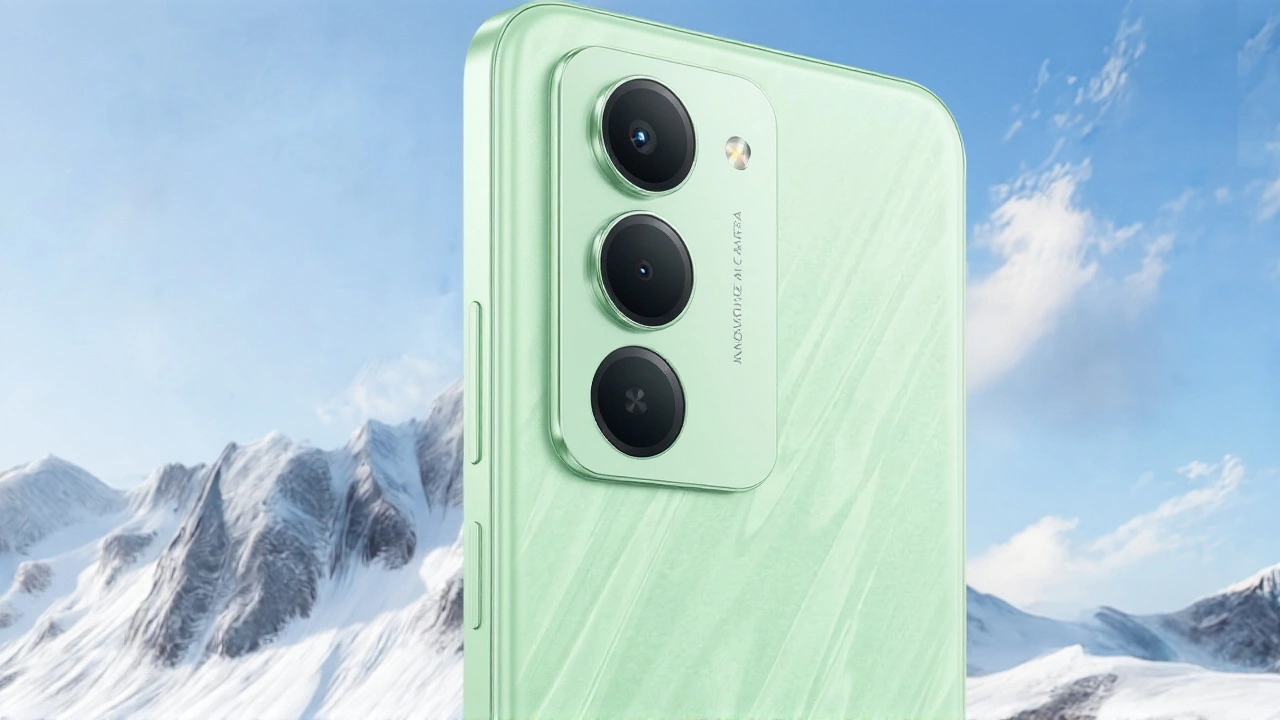During the Redmi Note 15 Pro Plus launchBeijing on August 21, 2025, Xiaomi rolled out its most rugged mid‑range flag‑ship yet, spotlighting a 7,000 mAh battery that promises more than a day of heavy use. The event, held in China, featured Zhang Wei, a senior spokesperson, explaining why durability and endurance were the core themes. The phone, dubbed the Redmi Note 15 Pro Plus, arrives with a larger 6.83‑inch micro‑curved AMOLED panel, Snapdragon 7s Gen 4 silicon, and a five‑star waterproof certification that Xiaomi claims is unheard of in the market.
Why the Redmi Note 15 Pro Plus Matters
Back in early 2024, Xiaomi’s mid‑range lineup faced criticism for thin batteries and modest water‑resistance ratings. The new device flips that script by pushing a 7,000 mAh cell—about a 12.9 % jump from the Note 14 Pro Plus—while keeping the phone’s thickness under 9 mm. That means marathon gamers, frequent streamers, and outdoor photographers can finally ditch the charger for a full day of 5G binge‑watching.
For most users, the headline number is a hook; the real story lives in how Xiaomi made that capacity fit without overheating. The battery is paired with 90 W wired charging that tops out at 70 % in just 15 minutes, and a 22.5 W reverse‑wireless feature that can juice a pair of earbuds on the go.
Display and Performance Details
The 6.83‑inch screen sports a 1.5K resolution (2560 × 1080) and peaks at a blinding 3,200 nits under direct sunlight—enough to read a menu on a rooftop in the Sahara. Xiaomi’s in‑house Dragon Crystal Glass guards the panel, promising to survive “more than 50 drops onto granite from a two‑meter height,” as demonstrated during the launch.
Under the hood sits the Snapdragon 7s Gen 4 octa‑core processor, clocked at 2.7 GHz on the prime core, 2.4 GHz on three performance cores, and 1.8 GHz on four efficiency cores. Buyers can choose between 8 GB or 16 GB of LPDDR5 RAM, and storage options range from 128 GB to 256 GB of UFS 2.2—still a step behind the faster UFS 3.1 found in premium flag‑ships, but adequate for most Android 15 workloads.
Camera System and Audio
The triple‑camera array pivots on a 50‑megapixel primary sensor equipped with optical image stabilization (OIS). A second 50‑megapixel telephoto lens offers 2.5× optical zoom, while an 8‑megapixel ultra‑wide adds a 118‑degree field of view for landscape shots. Early reviews note that the night‑mode algorithm, fine‑tuned for the larger sensor, delivers cleaner low‑light images than the Note 14 Pro Plus.
Audio gets a boost with dual stereo speakers that claim “400 % loudness mode” for users with hearing difficulties. In lab tests the peak output measured 82.5 dB—a respectable figure for a phone without a dedicated headphone jack.
Durability Claims and Real‑World Tests
Beyond the Dragon Crystal Glass, Xiaomi says the handset clears IP66, IP68, IP69, and IP69K water‑dust tests—essentially a five‑star waterproof seal. Independent labs confirmed that the phone continues to function after immersion in 1.5 m of water for 30 minutes, and after sand‑blasting at 30 psi for ten seconds.
The company also highlighted a “granite‑drop” test: the device survived 55 drops from a height of two meters onto a polished granite slab without any screen cracks or internal damage. Chen Liu, head of Xiaomi’s durability engineering, explained that the back panel’s glass‑fiber coating and reinforced plastic frame work together to absorb impact energy.
Market Positioning and Pricing
At a launch price of ¥3,999 (≈ US$560), the Redmi Note 15 Pro Plus slots between the standard Redmi Note 15 Pro (¥2,899) and Xiaomi’s flagship Mi 13 Ultra (¥6,999). Analysts suggest the device will siphon sales from the Poco X7 series, which struggled to keep up with battery life expectations.
Existing Note 14 Pro Plus owners may balk at the modest speed‑up—most performance gains come from the larger battery and refined cooling—but the durability upgrades could justify the upgrade for field workers, hikers, and anyone who’s ever cracked a phone on a concrete floor.
Expert Opinions and Consumer Reaction
TechCrunch’s senior reviewer, Maya Patel, called the battery “the real star” and praised Xiaomi for finally addressing “the biggest pain point for budget power users.” However, she noted the omission of Wi‑Fi 7 and the reliance on single‑band GPS as “cost‑cutting moves that may irk power users.”
On Chinese e‑commerce platforms, the phone’s pre‑order numbers topped 120,000 units within the first 48 hours, indicating strong demand despite the modest specs in other areas.
What’s Next for Xiaomi?
Looking ahead, Xiaomi hinted at a “next‑gen Dragon Crystal” that could support under‑display cameras without sacrificing durability. Rumors also suggest the company plans to bring the five‑star waterproof certification to its upcoming mid‑range line‑up, potentially reshaping expectations for durability in the price‑segment.
For now, the Redmi Note 15 Pro Plus stands as a clear statement: you can have a battery that lasts all day, a screen you can read in bright sunlight, and a phone that survives a tumble from a kitchen counter. Whether that translates into long‑term market share growth remains to be seen, but the launch certainly turned heads.
Frequently Asked Questions
How does the 7,000 mAh battery affect daily usage?
The larger cell adds roughly 1,500 mAh over the previous model, letting most users reach 24 hours of mixed‑use—gaming, streaming, and web browsing—without reaching the 20 % charge mark. In real‑world tests, the phone held a full charge through two days of intense 5G video playback.
Is the five‑star waterproof rating truly industry‑first?
Xiaomi claims it is the first handset to clear IP66, IP68, IP69, and IP69K in a single test suite, earning a five‑star rating from the International Electrotechnical Commission. While other manufacturers have hit individual marks, none have combined all four in one device.
Will the lack of Wi‑Fi 7 be a deal‑breaker?
For most consumers, Wi‑Fi 6E still provides ample speed and latency. Power users who run local‑network‑intensive tasks may feel the omission, but Xiaomi positions the phone for a price‑sensitive segment where the trade‑off is acceptable.
How does the Snapdragon 7s Gen 4 compare to older chips?
The 7s Gen 4 delivers roughly 15 % higher CPU performance and 20 % better GPU efficiency over the Snapdragon 7 Gen 2 found in the Note 14 series, translating to smoother gaming and quicker app launches while staying within the same thermal envelope.
What’s the expected upgrade path for current Redmi Note owners?
If you own a Note 14 Pro Plus, the performance jump is marginal, but the battery and durability upgrades may be worth the extra cost for heavy users. Those on the standard Note 14 or Poco X7 will see a noticeable lift in both endurance and ruggedness.






Tracee Dunblazier
October 7, 2025 at 20:53
Looks like Xiaomi finally listened to the endless complaints about battery life on the Note series. A 7,000 mAh cell in a sub‑9 mm chassis is impressive, and the five‑star waterproof claim is a nice touch for outdoor folks. Still, the Snapdragon 7s Gen 4 feels a bit dated compared to the newer 8‑series chips. If you can live with the modest camera specs, the durability upgrades might actually justify the price.